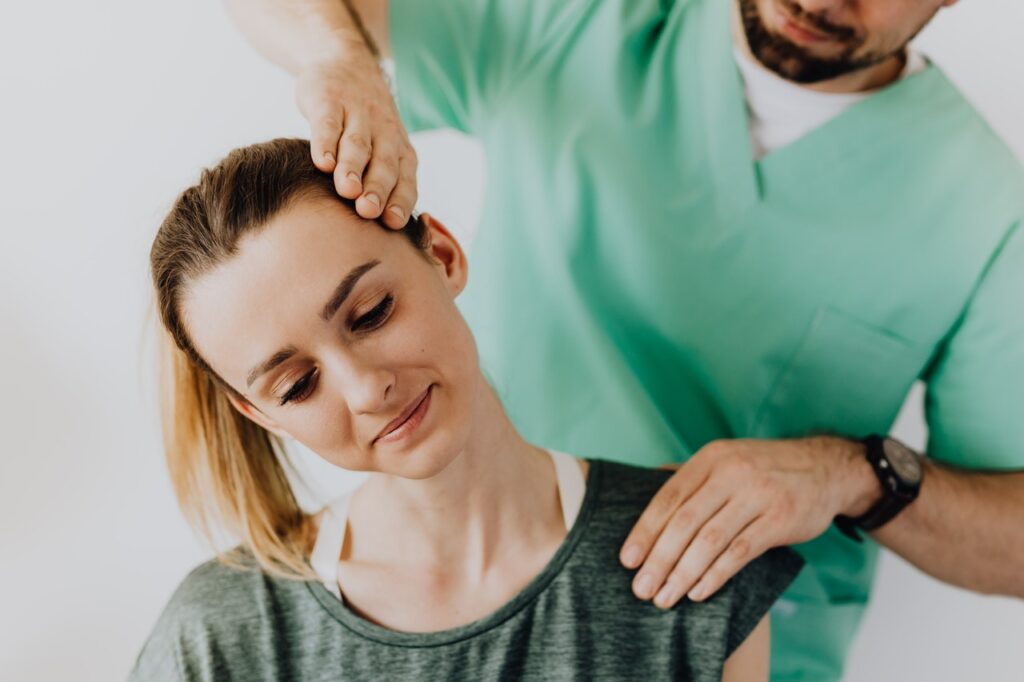Massage therapy is one of the oldest hands-on treatment techniques for treating pain and other injuries. Currently, it is a useful rehabilitative tool offered by many different therapists, including physiotherapists. Physiotherapy involves moving, shifting, or applying pressure to address dysfunction in the muscles, tendons, fascia, and other soft tissue.
Some of the benefits of massage therapy include:
- Alleviating pain
- Reducing adhesions and fibrosis (areas of dysfunction in the tissue)
- Promoting strength and flexibility during the healing process
- Releasing trigger points, or muscle tension
- Improving circulation to promote nutrient delivery
- Creating a lengthening effect in large and small muscle groups
- Reducing stress and boosting mood
- Increasing the sense of relaxation
- Improving overall function and energy
How Massage Therapy Works
Massage therapy is an umbrella term for a range of different massage techniques, from effleurage to deep tissue massage. Each of these techniques works slightly differently than the others in order to target a certain area, depth, or structure in the body.
Here are the common types of massage therapy, and how they work:
Swedish Massage
Swedish massage is a widely popular massage technique. It works by using long strokes, kneading, or tapping motions across the superficial layers of the body. It can be helpful for relaxation and relieving muscle tension and is commonly used as a whole-body technique, or for the lower back, shoulders, and neck.
Trigger Point Massage
Trigger point massage involves finding specific areas of tightness or discomfort in the tissue, known as “trigger points”, and applying pressure until the tissue underneath the contact point is released. This can help alleviate tight muscles and restore circulation. It is commonly used on large muscle groups, such as the trapezius (shoulder) muscles.
Effleurage
Effleurage is a technique used by trained therapists to loosen and relax problematic soft tissues. It works by applying rhythmic and continuous pressure on the target area in one direction only. The purpose of the technique is to promote circulation and disperse waste products and at the same time stretching the muscles underneath to relax the tissue.
Cross-Fibre Massage
Cross-fibre massage is a highly specific technique that is applied to a specific target site, such as a muscle or area of connective tissue. It helps to create a broadening and stretching effect at the site by using friction to reduce adhesions and promote fiber healing.
Deep Tissue Massage
Deep tissue massage is a type of massage therapy that is performed by a trained health professional to treat a variety of conditions, including chronic diseases and other soft tissue injuries. It can help people recover faster after injury and even help improve performance in athletes. It works by applying strong pressure to deep areas of tightness, relieving tension and lengthening the soft tissue underneath.
What To Expect During Massage Therapy
Before recommending massage therapy, the treating therapist will ask about the reason for visiting the clinic, including any symptoms, the mechanism of injury, medical history, and goals of the treatment. Once it has been established that massage therapy will be effective, the therapist will explain what type of massage they will use.
The therapist will roll up any clothing to expose the target area, and use towels for coverage and modesty as needed. It is common for the massage to be completed in a lying position, however, the therapist may suggest sitting as well. The therapist may use an oil or massage cream, so please inform the therapist if there are any allergies they need to be aware of.
The session may last anywhere between 5 to 90 minutes, depending on the type of massage and recommendations from the therapist. Massage therapy isn’t always relaxing. It should not cause any bad pain or symptoms. Keep breathing slowly throughout the treatment, and communicate with the therapist so they can monitor and adjust their approach.
What Is Massage Therapy Used For?
Massage therapy can be used for a variety of different conditions, including:
- Low back pain
- Delayed onset of muscle soreness (DOMS), commonly experienced after a gym or new exercise workout
- Muscle strains or knots (tight areas in the soft tissue)
- Chronic disease, such as arthritis
- Soft tissue injuries
- Mental health
Are There Times Massage Therapy Shouldn’t Be Used?
As with most treatments, there are several contradictions for massage. Massage therapy should not be used on infections, open wounds, osteoporosis, fractures, tumors, and circulatory issues such as blood clots. Massage should also be avoided on recent injuries, so other rehabilitative techniques may be more appropriate and effective, such as rest or ice.
Find Out How Massage Therapy Can Help
The human body is designed to move freely. Massage therapy is a powerful tool to enhance overall health, performance, and promote healing after an injury. Our Revive Spine and Sport Physiotherapy Clinic team offers the best massage therapy for Edmonton residents to get the best outcomes.
Call our Edmonton physiotherapy team to discover the benefits of massage therapy!
Always seek guidance from a medical professional about any specific health questions or issues.







